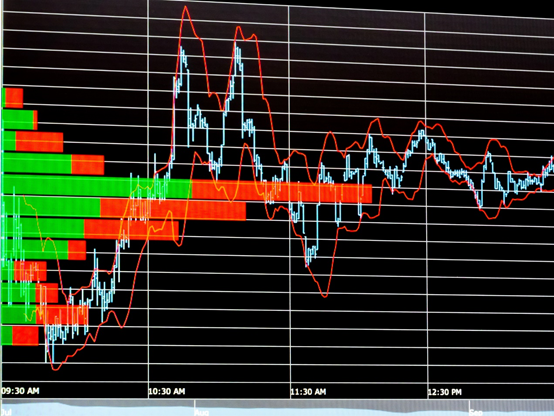Definition
Related Definitions
Market Indicators
What do you mean by market indicator?
A market indicator is a quantitative tool used by analysts to predict market moves based on financial data and other relevant economic parameters. A market indicator is a subset of technical indicators and is used by investors to decide their investment-related decisions. Market indicators typically use formulas and ratios to interpret financial data.
Summary
- Market indicator is a quantitative tool used by analysts to predict market moves based on financial data and other relevant economic parameters.
- Market indicators consist of formulas and ratios. Usually, investors and traders rely on market indicators to make their investment-related decisions.
- Market breadth, market sentiment, balance volume, and moving averages are few market indicators.
Frequently Asked Questions
How do market indicators help in predicting market movements?
There are a lot of similarities between technical indicators and market indicators. For example, both these indicators use the statistical formula for a series of data points to conclude. However, unlike technical indicators, the market indicator uses data points from various securities instead of a single security. Also, many times market indicators are not plotted on the same index price chart, but instead, they are plotted on a separate chart.
Analysts use market indicators to predict market fluctuations. Market breadth indicators refer to those indicators formed after analysing the number of companies that have reached new highs as against the companies that have either declined or reached new lows for a given time. Moreover, market breadth indicators provide the investors' information about the current market trends and help them ascertain future market trends. Market breadth indicators compare the number of stocks that show similar price movements. These indicators are helpful for those investors who want to gain profit by betting on price fluctuations in the market. However, this involves low risk if the indicators are accurate and reliable. In trading psychology, one cannot depend on these trends because they involve a lot of uncertainty and thus can result in sudden price movements.
An example can be the advance-decline line, which considers the number of stocks reaching new highs in a stock exchange compared to declining stocks.
This indicator is relevant because, during the calculation of the trajectory of price movement, it considers the value of the market capitalisation of a given company instead of just considering the stock price movement of the largest company for that index. An example can be $NAAD (NYSE) and $NYAD (NASDAQ).

Image Source: © Ponsulak | Megapixl.com
What are the different types of market indicators used by analysts before taking any investment decisions?
Though there are many market indicators, the few most common types of market indicators are:
- Market Breadth - Market breadth refers to the indicators created after analysing the number of companies that have reached new highs as against the companies that have either declined or reached new lows for a given time. When the number of stocks showing positive signs exceeds the number of declining stocks, it is positive market breadth.
- Market Sentiment: Market sentiment indicators compare the price of a security vis a vis its volume of trade. Market sentiment also referred to as investor sentiment, is more about feelings and emotions and not necessarily based on business performance. This informs if the investors believe that the price of stocks will rise or they are the ones who think that the price of stocks will decline. The put-call ratio is an example of market sentiment. The Put-call ratio is a popular indicator which calculates the number of put options against the call options for a given period. The put-call ratio helps the investors gauge the sentiments of the options market more efficiently. Generally, if the put-call ratio is more than one, it is considered an indication of a selloff. In contrast, if this ratio is less than one, it is said to indicate an opportunity to purchase.
- Moving Averages (MA): Moving averages is a technical analysis tool. Moving averages are useful in segregating relevant and irrelevant data points to smooth out the price data for a given period. Since MA is based on past prices, it is either a trend-following—or lagging— A constantly updated average price can be created using the moving average. There is a close relationship between the lag and the moving average. This suggests that the smaller the period for the MA, the lower the lag and vice versa. Based on this, the degree of lag for a 200-day moving average will be more significant than the degree of lag for a 20-day moving average. For stocks, the 50-day and 200-day figures are regarded as vital trading signals and are therefore widely used by investors and traders.
Furthermore, MA can represent several properties about the trajectory of a given security. For example, a horizontal moving average depicts a variation in the price of a security. In contrast, a positively sloped MA indicates the possibility of an increase in the price of a security. It is to be noted that moving averages do not forecast price movements but simply show the past price movements. Examples can be -- $NYA50, $NYA200, $NAA50, and $NAA200.

Image Source: © Okfotopuntoit | Megapixl.com
- On-Balance-Volume (OBV): On-balance volume (OBV) uses volume flow to forecast fluctuations in the stock prices. OBV is a technical analysis indicator. Based on volume change, OBV is used to project the timing of major market movements. Hence, rather than predicting the price movements, unlike other indicators, OBV confirms trends. It is believed that the volume of trade is a vital market indicator. Therefore, to track large and institutional investors, analysts mostly refer to volume numbers on the OBV.
OBV collects and represents numerous volume-related data into a single flowing line. Any rise in OBV would indicate an increase in the price of a security. Furthermore, if a rising OBV accompanies a fall in price, this indicates that the price may rise soon. However, if a falling price accompanies a flattened OBV, this indicates that a security price is nearing its bottom.
